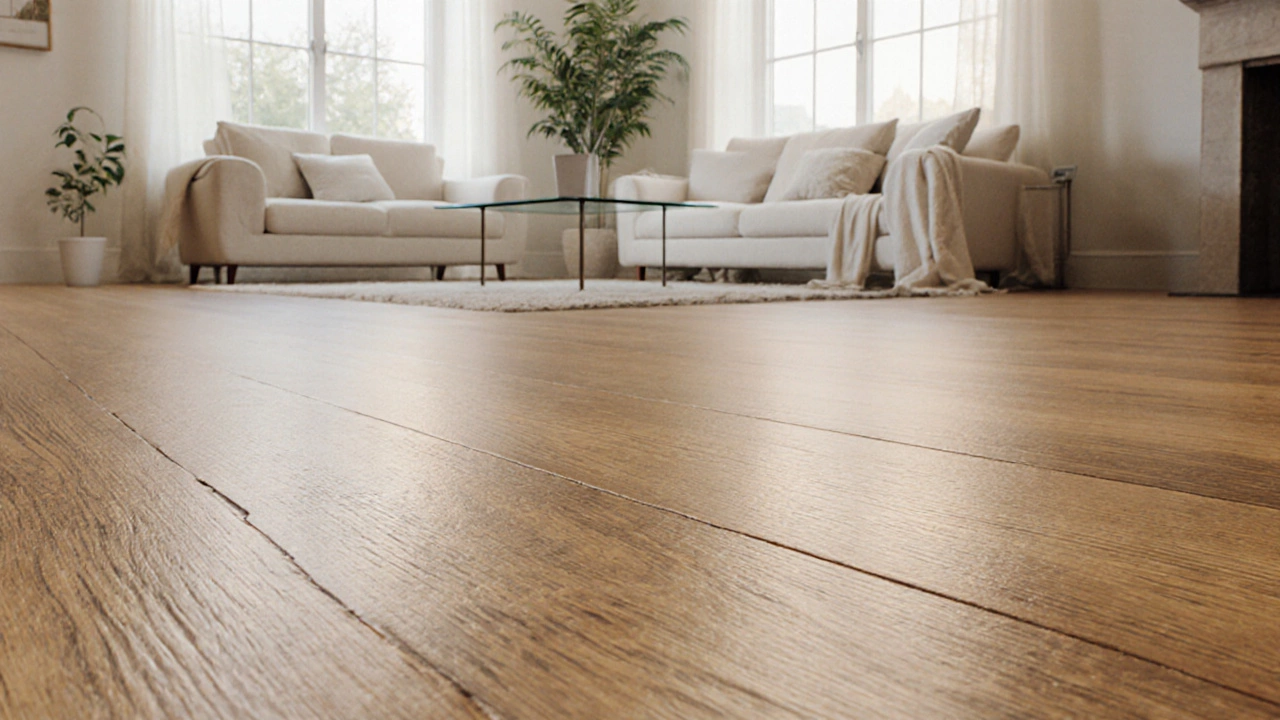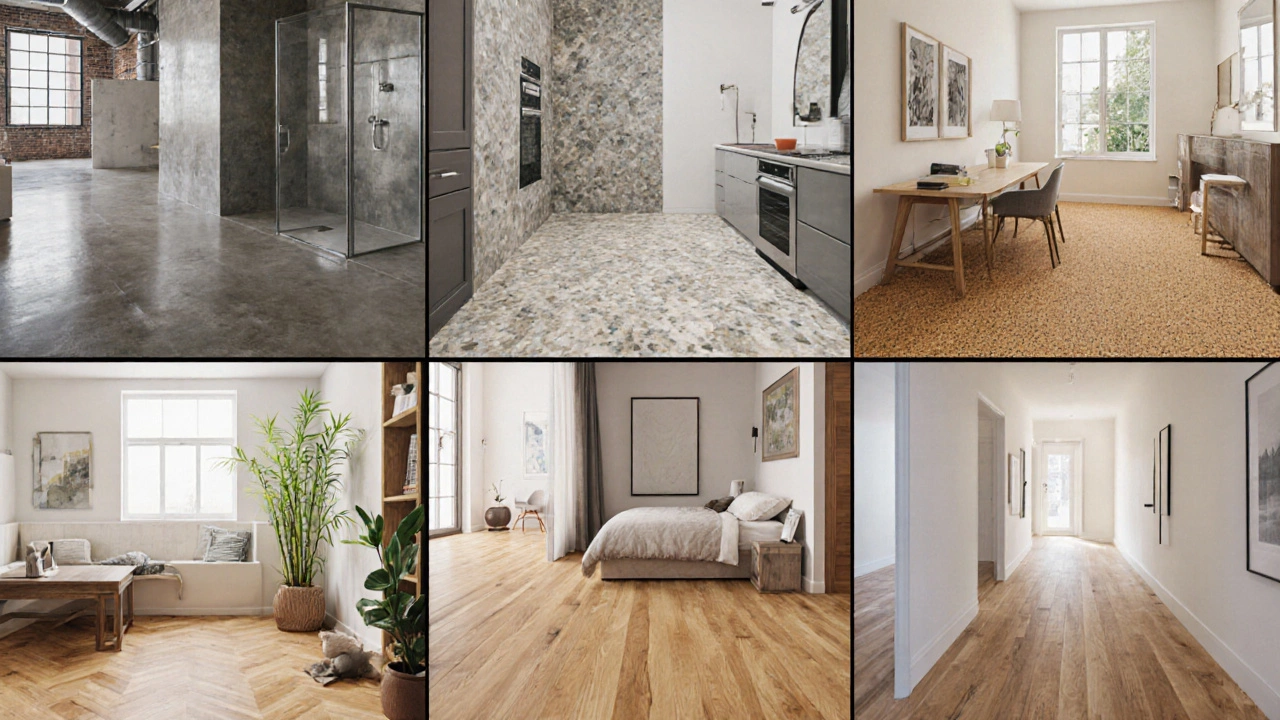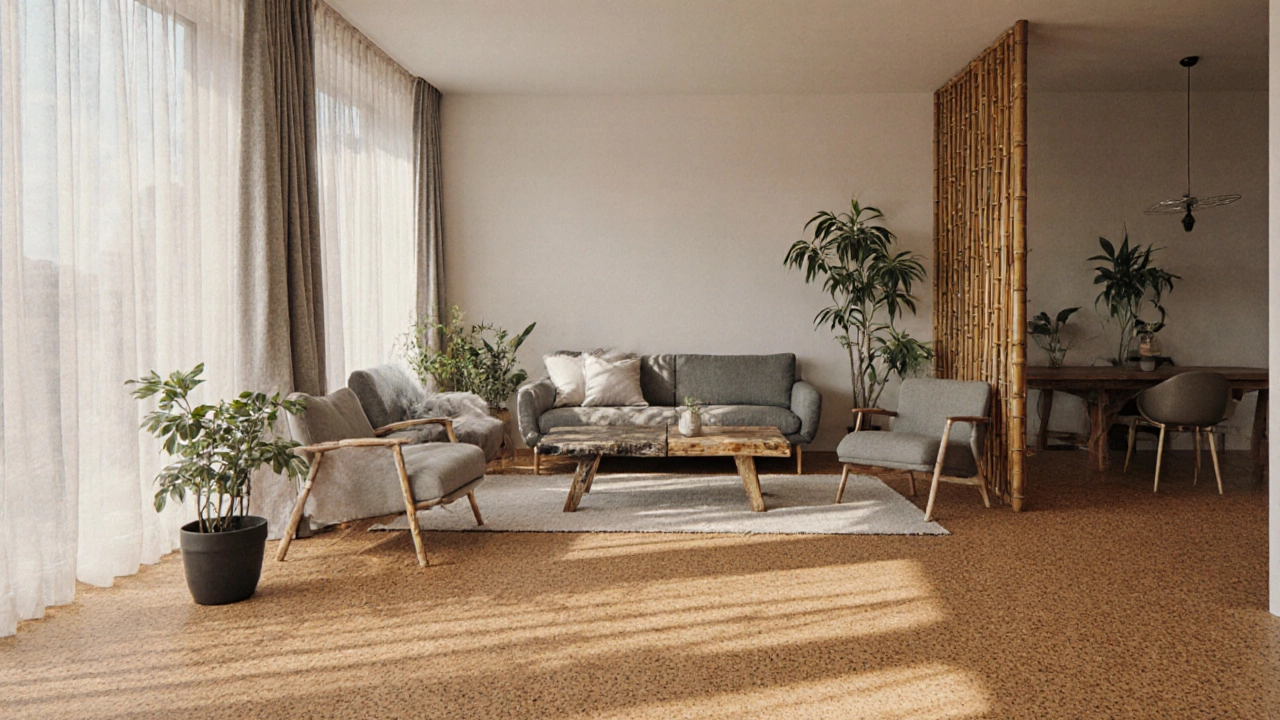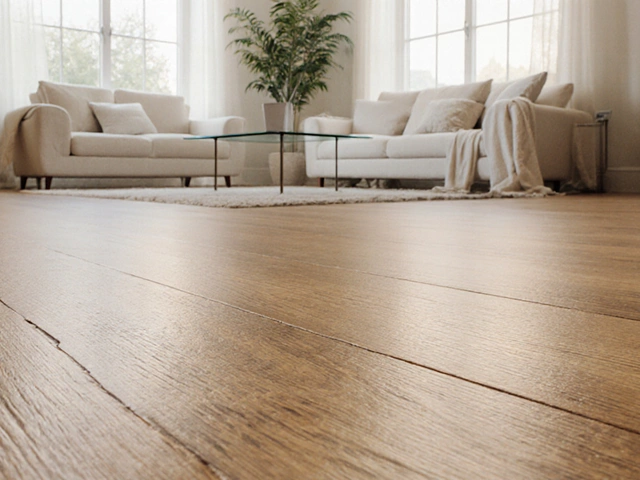Timeless Flooring Ideas: Styles That Never Age

Flooring Selection Guide
Find Your Perfect Timeless Flooring
Answer a few questions to discover which timeless flooring options work best for your specific needs.
Recommended Timeless Flooring Options
When it comes to flooring that never goes out of style, timeless flooring is a category of floor materials that maintain aesthetic appeal across decades, combining durability, versatility, and classic design. Homeowners keep asking which floors will look fresh after ten, twenty, or even fifty years. The answer isn’t a single product but a handful of tried‑and‑true materials that have survived changing décor trends. Below we break down each timeless option, compare their strengths, and give practical tips so you can pick the perfect floor for any room.
Why timelessness matters in flooring
Flooring is one of the biggest investments in a home. It endures foot traffic, spills, sun exposure, and the occasional pet mishap. Choosing a style that ages well saves money on future remodels and keeps resale value high. Besides economics, a floor that stays stylish reduces decision fatigue-no need to overhaul the look every few years.
Classic hardwood - the ultimate evergreen
Hardwood is a natural wood flooring that is milled from solid timber planks, offering grain patterns that evolve with wear. Whether it’s oak, maple, or walnut, hardwood delivers a warm, timeless character that works in both modern and traditional settings. Its ability to be sanded and refinished multiple times means the floor can be refreshed without replacing the entire surface.
- Durability: Excellent-can last 80+ years with proper care.
- Style longevity: High-neutral wood tones never clash with new furniture trends.
- Maintenance: Requires periodic refinishing; keep moisture levels stable.
- Cost: Medium to high, depending on species and finish.
- Sustainability: Choose FSC‑certified wood for eco‑friendly sourcing.
Engineered wood - modern twist on a classic
Engineered wood is a multi‑layer flooring product that combines a real wood veneer with a stable plywood core, providing the look of solid wood with improved moisture tolerance. It’s perfect for basements or radiant‑heated rooms where solid hardwood might warp. The veneer can be sanded once or twice, extending its lifespan.
- Durability: Very good; resistant to humidity.
- Style longevity: Mirrors solid wood aesthetics.
- Maintenance: Light sanding possible; use moisture‑controlled cleaners.
- Cost: Typically lower than solid hardwood.
- Sustainability: Uses less premium wood, often a greener choice.
Natural stone - durability that lasts centuries
Natural stone is a family of geological materials such as marble, travertine, and slate, prized for their unique veining and extreme hardness. Stone floors add an air of luxury that never feels dated. Their hardness makes them resistant to scratches, and they can be polished to maintain shine.
- Durability: Exceptional; can endure centuries.
- Style longevity: Classic elegance; each slab is one‑of‑a‑kind.
- Maintenance: Seal regularly to prevent staining.
- Cost: High; varies by type and finish.
- Sustainability: Quarrying impacts can be mitigated by using locally sourced stone.

Porcelain tile - style that never fades
Porcelain tile is a dense, low‑porosity ceramic tile fired at high temperatures, offering water resistance and a wide range of designs. Modern porcelains mimic wood, stone, or even concrete, but they retain the low‑maintenance benefits of tile. Because they’re less likely to chip than traditional ceramic, they hold up well in high‑traffic areas.
- Durability: High; resistant to moisture and wear.
- Style longevity: Versatile patterns stay fresh.
- Maintenance: Simple; sweep and mop.
- Cost: Moderate to high, depends on design.
- Sustainability: Some manufacturers use recycled content.
Polished concrete - industrial chic that ages well
Polished concrete is a finished concrete slab that is ground, honed, and sealed to produce a glossy, low‑maintenance surface. Its raw yet refined look fits minimal‑ist homes and commercial lofts. Concrete can be stained or embedded with decorative aggregates for subtle color variations.
- Durability: Outstanding; resists dents and scratches.
- Style longevity: Industrial aesthetic is perennially popular.
- Maintenance: Occasional resealing.
- Cost: Moderate; labor can be the biggest expense.
- Sustainability: Uses existing slab, reducing material waste.
Cork - sustainable comfort that stays fresh
Cork is a renewable flooring material harvested from the bark of cork oak trees, offering softness, insulation, and natural resilience. Its warm, earthy tone pairs well with eclectic interiors. Cork ages gracefully, developing a patina that adds character.
- Durability: Good; resistant to dents and cracking.
- Style longevity: Natural look fits many design paths.
- Maintenance: Seal annually to protect against moisture.
- Cost: Mid‑range.
- Sustainability: Highly renewable; harvest does not kill the tree.
Bamboo & Luxury Vinyl Plank - eco‑friendly alternatives that stay on‑trend
Bamboo is a fast‑growing grass that can be engineered into flooring that mimics hardwood grain while offering superior hardness. When sourced responsibly, bamboo provides a green footprint and a contemporary look.
Luxury Vinyl Plank (LVP) is a multi‑layer synthetic flooring that replicates wood or stone patterns with a durable wear layer, perfect for high‑traffic zones. Modern LVP technology produces realistic textures that hold up against pets and spills.
- Durability: Bamboo - high; LVP - very high.
- Style longevity: Both emulate classic materials.
- Maintenance: Easy; mop or sweep.
- Cost: Generally lower than natural wood or stone.
- Sustainability: Bamboo is renewable; LVP can contain recycled content.

Choosing the right timeless floor for your space
Consider three factors before deciding:
- Room function: High‑moisture rooms (kitchens, bathrooms) favor tile, stone, or sealed LVP. Living areas benefit from hardwood or engineered wood for warmth.
- Foot traffic: Entryways and hallways need durable options like polished concrete, porcelain tile, or LVP.
- Climate: In humid climates, avoid solid hardwood unless properly sealed; engineered wood or tile handle moisture better.
By matching material strengths to these needs, you’ll get a floor that looks fresh for decades.
Care and maintenance to keep style alive
Every floor type has a simple upkeep plan. Here’s a quick cheat‑sheet:
- Hardwood & engineered wood: Sweep daily, use a damp mop, refinish every 5‑10 years.
- Stone: Sweep, mop with pH‑neutral cleaner, reseal annually.
- Porcelain tile: Sweep, mop with mild detergent, rotate grout lines when re‑grouting.
- Polished concrete: Dust mop, mop with neutral cleaner, reseal every 2‑3 years.
- Cork: Vacuum, mop with cork‑safe cleaner, reseal to prevent water damage.
- Bamboo & LVP: Sweep, mop with vinyl‑safe cleaner, avoid harsh chemicals.
Consistent care prevents dulling, stains, or warping, ensuring your floor stays in the spotlight.
Quick comparison of timeless floor types
| Material | Durability | Style Longevity | Maintenance | Typical Cost (NZD/m²) | Sustainability |
|---|---|---|---|---|---|
| Hardwood | Excellent | High | Refinish periodically | 150‑250 | High when FSC‑certified |
| Engineered wood | Very good | High | Light sanding | 120‑200 | Better resource use |
| Natural stone | Exceptional | Very high | Seal yearly | 200‑350 | Varies by quarry |
| Porcelain tile | High | High | Simple mop | 100‑180 | Recycled options |
| Polished concrete | Outstanding | High | Reseal occasionally | 80‑150 | Low waste |
| Cork | Good | Medium‑high | Seal annually | 90‑130 | Renewable |
| Bamboo | High | High | Easy | 80‑120 | Rapidly renewable |
| LVP | Very high | High | Easy | 70‑110 | Recycled content possible |
Seeing the data side by side makes it clear which material aligns with your priorities. Whether you crave the classic grain of hardwood or the sleek grit of concrete, each option stays fashionable long after trends fade.
In the end, the secret to timeless flooring is choosing a material that blends durability with a design language that never feels dated. timeless flooring isn’t a fleeting concept; it’s a set of proven choices that keep your home looking fresh for generations.
Frequently Asked Questions
Can I install hardwood in a basement?
Solid hardwood is not ideal for basements because moisture can cause cupping. Opt for engineered wood with a moisture‑resistant core, or choose waterproof LVP that mimics wood.
Is polished concrete cold underfoot?
Concrete can feel cool, especially in winter. Installing radiant floor heating or using area rugs adds warmth without compromising the sleek look.
How do I keep stone floors from staining?
Seal the stone with a penetrating sealant every 12‑18 months. Clean spills immediately with a pH‑neutral cleaner to prevent deep penetration.
Which floor is best for a pet‑friendly home?
Porcelain tile, LVP, and polished concrete resist scratches and are easy to clean. If you love wood, choose a high‑hardness hardwood like white oak and use protective pads on furniture.
Will cork fade in sunlight?
Cork is naturally resistant to UV, but prolonged direct sunlight can cause slight lightening. Use window treatments or area rugs in sun‑heavy spots to preserve color.
